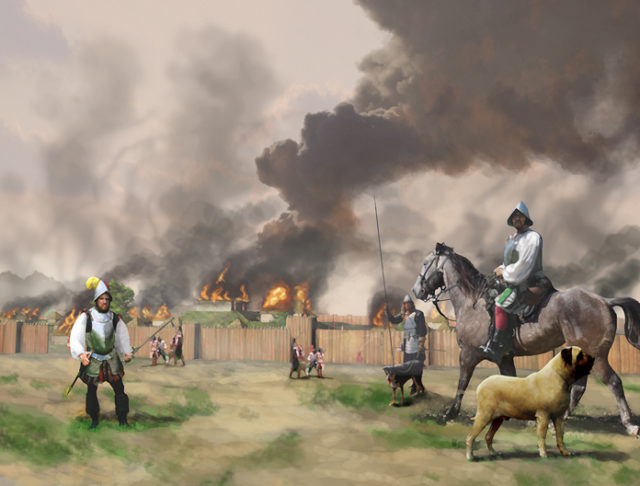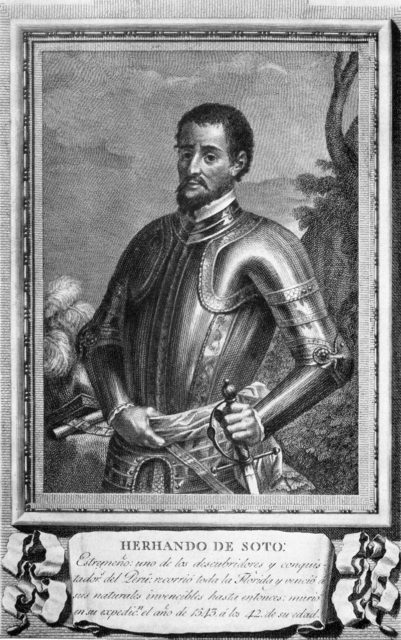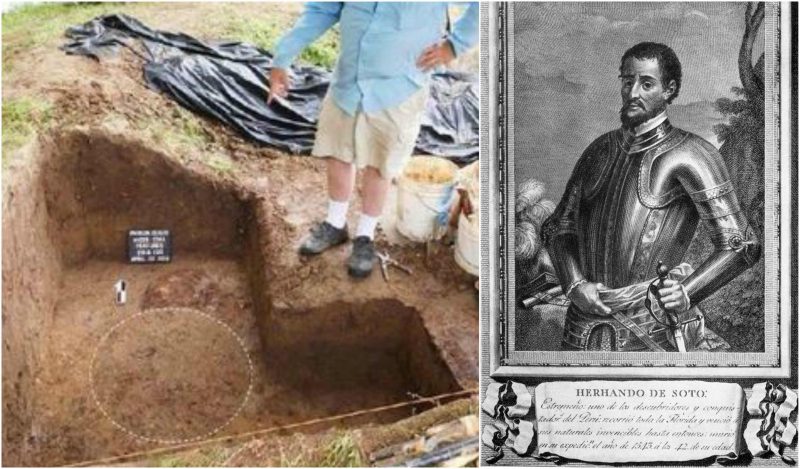The recent unearthing of wood fragments in Cross Country, Arkansas is believed to be the remains of a large wooden cross erected by the Spanish conquistador Hernando de Soto. The Spanish explorer and commander was believed to have entered the Arkansas during his expedition to explore the North America and ordered to erect the cross in the year 1541 on top of a hill.

source:AR Democrat Gazette
The story of the excavation of the Spanish Cross goes back at least four decades, when the first pieces of the relic were unearthed in 1966. The Arkansas Archaeological Survey issued news releases with the details of the findings and the history of the excavation at the site.
In 1966 a team of archaeologists from the University of Arkansas was dispatched to investigate the holes left behind by the looters, near the Native American village of Casqui. The Archaeologists were focused on the cleaning up process of the holes and had no inkling of what lay ahead of them.

The tales of Soto’s Cross were well known in the region, but over the years took the form of legend, the archaeologists in 1966 discovered a large wooden box supposedly belonging to the Soto. From there experts connected the dots and found out that the legend of Soto’s cross has more truth in it then it was previously thought. Experts took a sample of the wooden box, which was then sent to the University of Arkansas museum where it was kept safely until the 1990’s.
During his expedition of the North America that spanned over four years 1539-1542, the Spanish conquistador and his troops pushed their way deeper into the southern United States. The Spaniards faced fierce opposition yet due to their experience of fighting and beating the natives worldwide, they mostly emerged victorious. It is believed that De Soto erected the massive Cross on the mountain overlooking Native American village on July 4th 1541, according to some experts as a sign of Christian victory over the barbaric pagan tribes.
The wooden fragment of the box stayed in Arkansas University museum was carbon dated under the supervision of Dr. Jeffrey Mitchel in 1992. The results were not surprising as the sample was revealed to have originated sometime between 1515 and 1663, bringing it even closer to the Spanish explorer.

Since the finding by Dr. Jeffrey a number of archaeologists have tried to shed light on the identity of the box and the mountain site; however the detailed excavation was funded last year after which the experts started analyzing the wooden box which was exposed during 1966 excavation. The wood of the box was tested and came out as cypress. Another important new development coming out of the recent excavation was the remnants of Native American pottery discovered under the box. The only missing link that experts are trying hard to explain is the age of the cypress wood, which is now being done by leading cypress tree ring experts.
